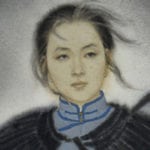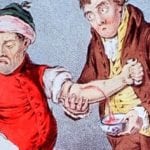 History
History  History
History  Weird Stuff
Weird Stuff 10 Superstitious Beliefs That Once Consumed Entire Cultures
 History
History 10 Bizarre Friendly Fire Incidents in Military History
 Technology
Technology 10 Modern Technologies That Accidentally Imitate Ancient Magic
 Mysteries
Mysteries 10 Mysteries of the Human Genome
 Weird Stuff
Weird Stuff 10 Things So Rare They’ve Only Been Found Once
 History
History 10 Legends Whose Last Moments Undid Their Glory
 Health
Health 10 Futuristic Ideas to Treat Common Medical Problems
 Weird Stuff
Weird Stuff Ten Surreal Attempts to Reverse Baldness
 Facts
Facts 10 U.S. Government Contingency Plans for the Unthinkable
 History
History 10 Odd Things Colonial Americans Kept at Home
 Weird Stuff
Weird Stuff 10 Superstitious Beliefs That Once Consumed Entire Cultures
 History
History 10 Bizarre Friendly Fire Incidents in Military History
Who's Behind Listverse?

Jamie Frater
Head Editor
Jamie founded Listverse due to an insatiable desire to share fascinating, obscure, and bizarre facts. He has been a guest speaker on numerous national radio and television stations and is a five time published author.
More About Us Technology
Technology 10 Modern Technologies That Accidentally Imitate Ancient Magic
 Mysteries
Mysteries 10 Mysteries of the Human Genome
 Weird Stuff
Weird Stuff 10 Things So Rare They’ve Only Been Found Once
 History
History 10 Legends Whose Last Moments Undid Their Glory
 Health
Health 10 Futuristic Ideas to Treat Common Medical Problems
 Weird Stuff
Weird Stuff Ten Surreal Attempts to Reverse Baldness
 Facts
Facts 10 U.S. Government Contingency Plans for the Unthinkable
10 Poets Who Were Completely Mad, Bad, And Dangerous To Know
Poets are sensitive, ethereal creatures, ineffectual dreamers obsessed with metaphors and finding the right rhythms and rhymes. They’re generally harmless, right? Not always. On this list, there are killers, crooks, plotters, rakes, a blackmailer, several revolutionaries, heartbreakers, duelists, drunkards, an opium fiend, a serious oddball, and even one fascist. To borrow the words of Lady Caroline Lamb, who played mistress to one of them, these men were mad, bad, and dangerous to know.
10François Villon
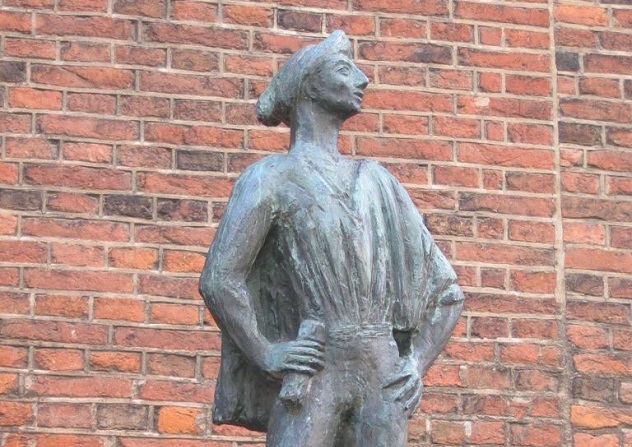
Villon by name and villain by nature, he was a murderer, thief, and an all-round low-life. He was also the finest lyric poet in France in the 15th century. Born in either 1431 or 1432, he was brought up by a professor of canon law in Paris. After leaving university in 1452, his life descended into a series of brawls, imprisonments, and exiles. His only appearances within the historical record come from prison data.
In 1455, Villon was involved in a drunken quarrel in Paris, which ended when he stabbed a priest to death. He was banished from Paris for this crime, but he received a royal pardon. He was banished again in 1456 for leading a band of robbers who stole 500 gold crowns from the College de Navarre. He served time in Blois in 1457 and in Moulins in 1461. Villon last appears in Parisian records in 1462 for theft. After being freed, he was involved in another brawl and sentenced to death, only to be banished instead. After 1463, he disappears completely.
Despite his lifestyle, Villon was a master of the intricate poetic forms of the ballade, the rondeau, and the chanson. His longer works touch on cosmology, satire, and religious symbolism. His work is rife with themes of failed love, melancholia, human suffering, lost time, and the ubiquity of death, featuring a cast of princes and prostitutes mired in Parisian brothels and drinking dens. Rimbaud revived his work in the 19th century, while Rossetti translated it into English, giving us the magnificent line “Where are the snows of yesteryear?”
9Sir Thomas Wyatt
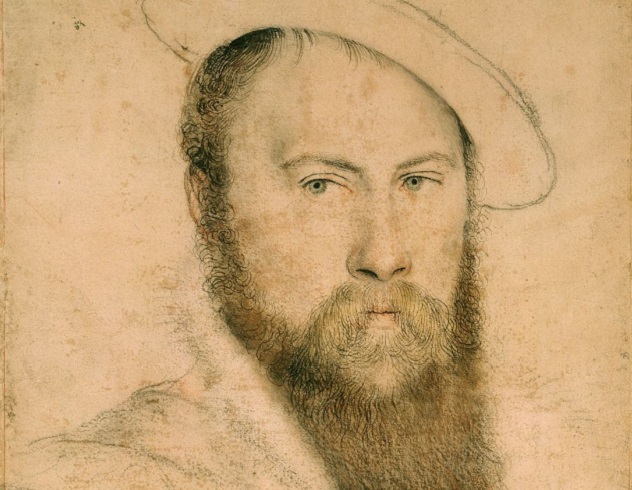
Wyatt played the dangerous game of sex, money, and power that constituted court politics under Henry VIII. He made his life even more dangerous by competing with the king for the hand of Anne Boleyn. After all, Henry’s enemies had a habit of ending up with their heads separated from their bodies.
Wyatt was a courtier and companion of Henry VIII from the age of 13. He was married at 17 and separated soon after. Some sources say that he had become the lover of Anne Boleyn by 1522, not long before she turned Henry’s head. At least four poems by Wyatt are believed to refer to Anne, including the sonnet “Whoso list to hunt . . . ” that conceptualizes her as a deer hunted by many suitors but belonging solely to Caesar.
His diplomatic career reflected his falling in and out of favor with the king. He was sent away from court to France in 1526 and to Italy in 1527, where he was captured by troops of the Holy Roman Empire. During Anne’s fall from grace in 1536, Wyatt was imprisoned for associating with her and viewed her execution from his cell. In 1539, he was the lead plotter in a plan to assassinate the Catholic Reginald Pole using intricate ciphers and poisons. By 1540, he was back in prison for treason. His later mistress was also rumored to have been taken by Henry as his lover.
His work was never published within his lifetime, but he was one of the leading poets of the English Renaissance. During his time in Italy, he picked up the works of Petrarch and introduced Italian models and poetic forms into English verse, including the sonnet.
8John Wilmot, Earl Of Rochester
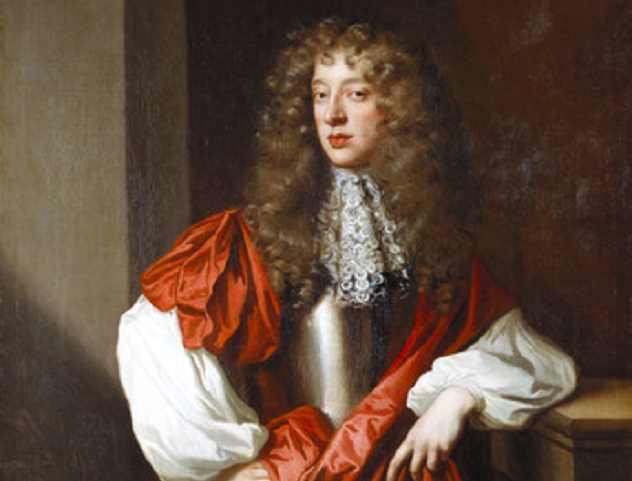
Rochester’s life was one long shambolic debauch before he died exhausted at age 33 in 1680. He was the greatest rakehell in the golden age of hell-raising that followed the Restoration of the monarchy under Charles II in 1665.
Brought up by a Puritan mother, Rochester was introduced to drinking and whoring as a teenager at Oxford. Facing opposition from the parents of the girl he wanted to marry, Rochester simply kidnapped her from her coach one night at Charing Cross. He was sent to the Tower of London, but he married her on his release in 1667.
All noblemen took mistresses, but Rochester possessed an especially voracious appetite for whoring. His poetry is obsessed with liaisons, orgies, and drinking. He once confessed to having been continuously drunk for five years, amid complaints from his neighbors about his naked cavorting.
Rochester fought a sword fight with French officers at the Paris Opera in 1669, challenged several enemies to duels and was involved in the death of a drinking companion after a heavy session in 1676 ended with his cronies attacking a constable. He spent the 1670s in disgrace after insulting the king’s favorite mistress, drunkenly destroying the royal sundial, and mistakenly handing Charles II a poem lampooning him.
Although an enthusiastic participant in the sybaritic culture of the Restoration, Rochester remained a sardonic observer of the mores of his age in his verse. His work was important in developing the rhymed couplet in iambic pentameter as a medium for satire and for his imitations of the Roman poets Horace and especially Lucretius.
At his best, Rochester combines wit, bawdiness, satire, and the materialism of Thomas Hobbes. Try “A Satyr Against Mankind,” “Signior Dildo,” or “A Ramble in St. James’s Park,” but you might not want to read them too openly.
7Richard Savage
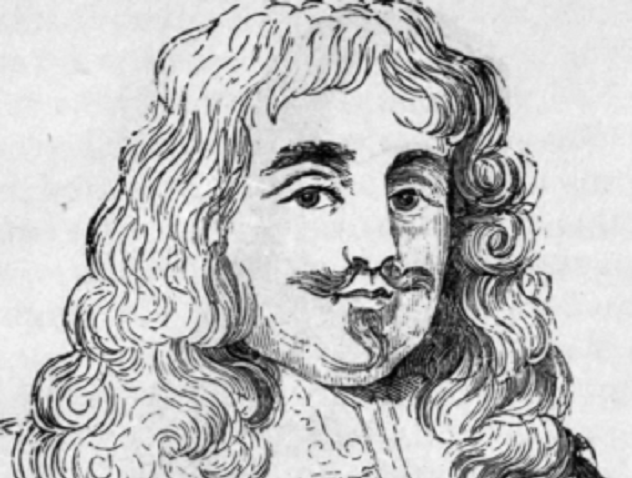
The aptly named Richard Savage was a satirist, blackmailer, murderer, and a friend of the poet Alexander Pope. He possessed a spectacular talent for falling out with the people he relied on for his well-being, and he blackmailed the woman he claimed was his mother.
His origins are murky, but the facts seem to be these: In 1698, the Earl of Macclesfield divorced his wife, Anne, who then married one Colonel Brett. She also had two children with a man called Richard Savage, the 4th Earl Rivers, one of whom was given away at six months old in 1697. In 1718, the poet Richard Savage appeared, claiming to be the abandoned child and that he had been persecuted by his mother, kidnapped, and sent to the West Indies.
It’s almost certain that he was an imposter, but he wrote a poem entitled “The Bastard” detailing his mother’s abuse and used the ensuing scandal to blackmail her family. Her son, Viscount Tyrconnell, gave him a home and £200 a year for his silence.
In 1727, this charming figure murdered a man named James Sinclair in a coffeehouse following a drunken argument. He was sentenced to hang at the Old Bailey before outcry among the literati led to a royal pardon from Queen Charlotte and a royal pension until her death in 1737.
He relied on Pope for money and provided gossip on fellow poets as material for Pope’s Dunciad. Having once been patronized by Sir Richard Steele, the founder of The Spectator magazine, the pair soon had a falling out. By 1742, Savage had even managed to sufficiently annoy Pope to the point that he canceled the pension he provided. He died in debtor’s prison in Bristol a year later.
6George Gordon, Lord Byron
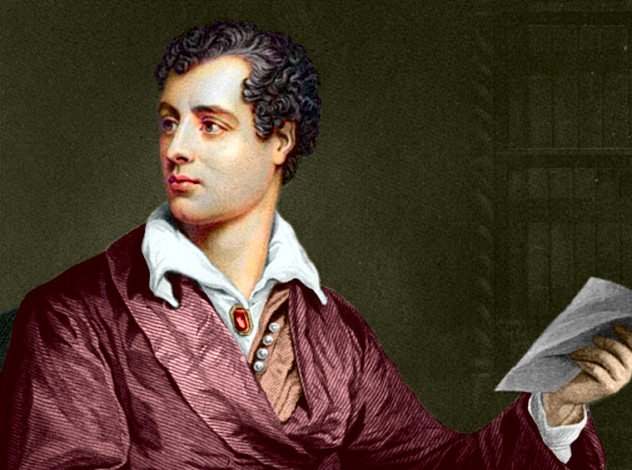
Lord Byron was the ultimate Romantic rock-and-rolling bad boy, with a taste for excess. Men wanted to be like him, and women wanted to be with him. His mad energy was probably inherited from “Mad Jack” Byron, his womanizing father who was rumored to have slit his own throat. The younger Byron turned the great hall of his ancestral home into a shooting gallery, drank from a cup formed from a human skull, and lived off nothing more than biscuits and wine. He spent his Grand Tour hanging out with Albanian warlords and kept a pet bear at Cambridge. He swam the Hellespont and kept a menagerie of foxes, monkeys, peacocks, cats, falcons, and a wolf in his palazzo in Venice.
His love affairs were countless and frequently scandalous. Several times, his doctors warned about cutting down on the amount of sex he had, as it had actually become physically debilitating. He spent the year 1808 in London and Brighton living with prostitutes, one of whom he dressed as a boy and introduced to visitors as his brother. During their affair, Lady Caroline Lamb would send him locks of her pubic hair as a keepsake.
He went through actresses, opera singers, countesses, and choirboys. He got the stepsister of Mary Shelley pregnant before swiftly dropping her. In Italy, the outraged husband of one mistress, Countess Guiccioli, challenged him to a duel. While living in Venice between 1816 and 1818, he claimed to have slept with 200 women, including a long affair with the wife of his landlord.
After marrying in 1816, he abandoned his pregnant wife and fled to the Continent following rumors of incest with his half-sister. Meanwhile, his works were regarded as blasphemous, which made him the most notorious poet in Europe. In Italy, he was connected with the revolutionary Carbonari. He died of fever in 1824 in Greece, after joining their fight for independence from the Turks and paying to re-equip the Greek fleet.
5Percy Bysshe Shelley
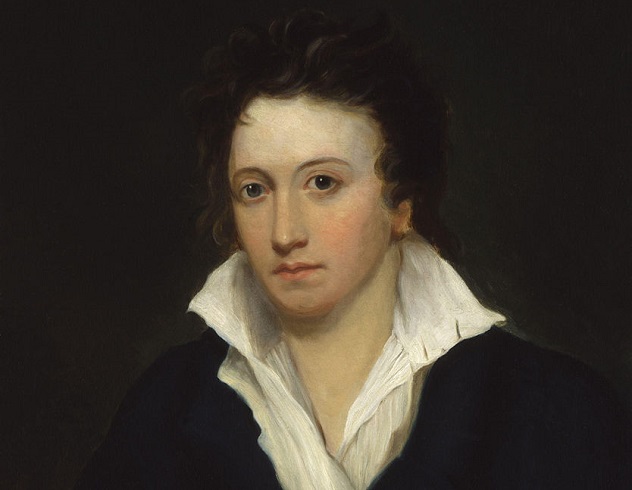
Percy Shelley was a great friend of Lord Byron, but his character was a little different. He was a well-intentioned and idealistic poet who unwittingly left a trail of destruction in his wake. He was the son of a landowner and educated at Eton, where he was known as “Mad Shelley” for his interest in the new science of electricity. He was bullied terribly and developed a hatred of the social system, becoming a passionate supporter of the French Revolution.
At Oxford, he wrote a pamphlet entitled “The Necessity of Atheism” that was sold in a bookshop directly opposite his college and led to his expulsion. He became estranged from his father and was forever in need of money. With a growing family and a lurid reputation within England, Shelley left for a peripatetic life in Italy in 1818. He dragged his family and hangers-on from Florence to Pisa, then to Naples, and finally Livorno, where he drowned in 1822.
He called for revolution throughout Britain even when it annoyed those around him and became dangerous, resulting in an attempt on his life by government spies in 1813. He truly believed that literature could change the course of history, and his poetic works abound with figures of Promethean energy that transcend their time and circumstances.
He also had a habit of attracting young women and then discarding them. At 19, he eloped with the 16-year-old Harriet Westbrook, only to dump her for Mary Godwin while Harriet was pregnant with his child. She later drowned herself in the Serpentine in Hyde Park. Mary Godwin’s half-sister also killed herself after falling for Shelley and being rejected by him and his coterie of admirers.
4Alexander Pushkin
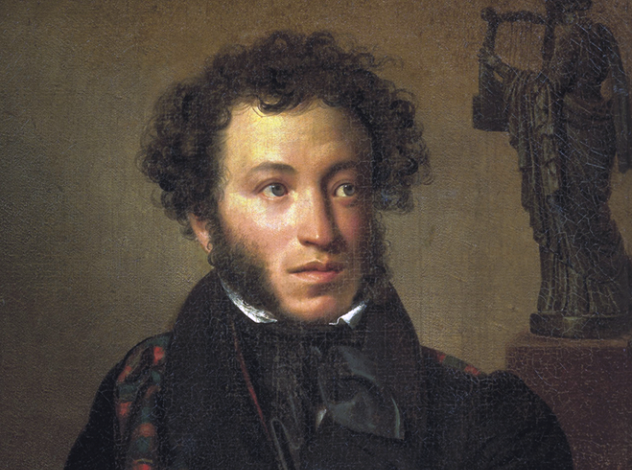
Alexander Pushkin was notoriously irascible and sensitive about his honor. It’s amazing that he even reached the ripe old age of 37, for in his short life, he was involved in at least 29 duels, the last of which saw him killed. He dueled over slights about his verse, insults directed at his friends, women he was courting, arguments at the dinner table, comments about his appalling manners, and even over the weather.
In 1822, he fought an army officer after accusing him of cheating at cards. Pushkin calmly stood eating cherries while his opponent took aim, but the man failed to land his target. In a final act of insouciant contempt, Pushkin refused to return fire, an indication that he thought his opponent not even worth the powder and shot. He was a curious mix of volatile testosterone and crippling insecurity.
Pushkin spent his youth in St. Petersburg drinking, gambling, and womanizing while nominally working for the Foreign Ministry. He wrote verses and joined an anti-Czarist organization, for which he was exiled to Odessa in 1820, where he continued to court other men’s wives and cause trouble. He was exiled again to his parents’ estates for atheism before being freed by the Czar in 1826. Pushkin remained under surveillance by the secret police until he died.
Pushkin was frequently in debt despite coming from an aristocratic family. One of his ancestors had been an Ethiopian who entered the Imperial service in Russia. Pushkin cultivated a wild, Byronic image and is remembered as the great poet of Russian Romanticism. It may not come as a surprise that his great verse-novel, Eugene Onegin, is structured around a duel and a love triangle.
His marriage to 17-year-old Natalya Goncharova proved to be his undoing. The Czar fancied her for himself and humiliated Pushkin by giving him the lowest court position possible to keep him and his wife at court. Other suitors followed, including the French emigre Baron D’Anthes, who married the sister of Natalya just to continue his courtship of her. Pushkin, driven mad by rumors that he was a cuckold, demanded a duel with D’Anthes. In deep snow, Pushkin was killed by the Frenchman’s shot.
3Charles Baudelaire
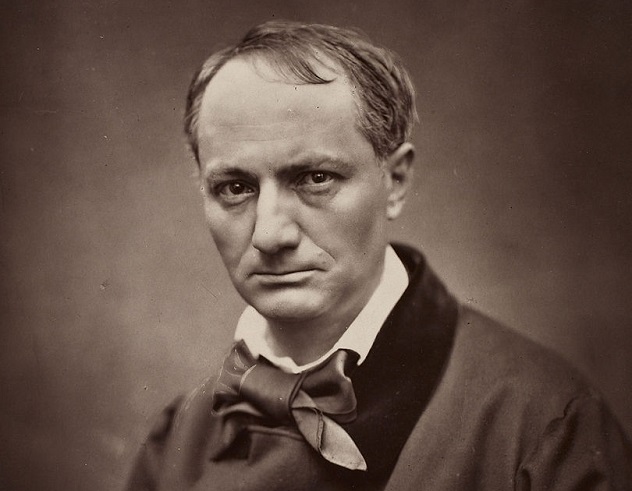
In the catalog of vices detailed in this list, Charles Baudelaire represents the allure of opium, hashish, and exotic women. As an art critic and aesthetic theorist, he pioneered a view that art was free from the constraints of morality, while also introducing Edgar Allan Poe to the French through his translations.
As a poet, his collection Les Fleurs du Mal of 1857 embodied his theories on art and introduced themes of death, decay, the grotesque, and the feeling of ennui that comes from urban living. Several of the poems were banned for a century in France, and Baudelaire was tried for offenses against public decency.
He led the excessive lifestyle espoused in his verse. He was expelled from school and contracted syphilis from a prostitute by the age of 18, which caused him pain and illness for the rest of his life. He refused his family’s plans of a diplomatic career to pursue life as a man of letters, but he was frequently without money after his mother and step-father took control of his funds. They also rejected his Haitian mistress, the woman he called his “Black Venus.”
Spending his time among beggars, prostitutes, and the absinthe-drinkers of Paris, Baudelaire shared their need to escape from urban squalor to an artificial paradise by any means. With his fellow writer Gautier, he was part of a club of hashish users, as well as a heavy drinker and laudanum addict. His mother had to pay off his debts after he died at the age of 46.
2Algernon Swinburne
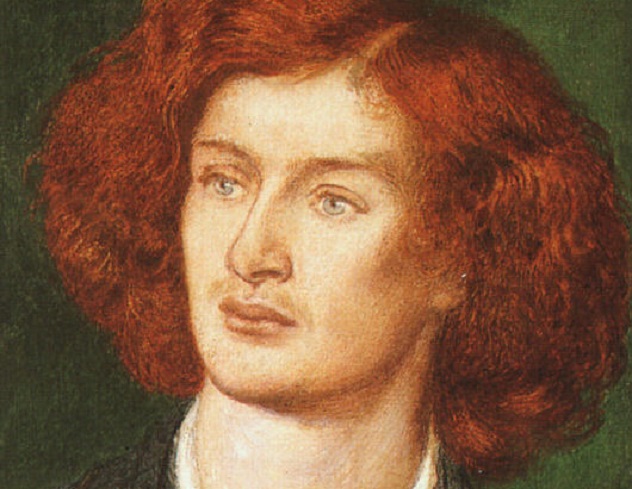
Algernon Swinburne was a self-destructive drunkard and had some decidedly odd, perverse interests. He had noble forebears, was educated at Eton and Oxford (and nearly expelled from the latter), and spent time traveling in France and Italy. Much of his life was spent living with the drug-addicted artist Dante Gabriel Rossetti on Cheyne Walk in Chelsea before being forced to retire an invalid with the poet Theodore Watts-Dunton.
He was only 160 centimeters (5 ft) tall, suffered fits and tremors, lived on the edge of his nerves, and drank to excess, often until unconsciousness. His work is associated with decadence and regarded these days as overwritten, full of lush alliteration and internal rhymes. Swinburne specialized in exploring and glorifying themes that were shocking to Victorian tastes, some of which seem a little extreme even today. He had a particular taste for flagellation and liked to boast about indulging in bestiality and pederasty. His novel Lesbia Brandon was unpublished until the 1950s, and his 1868 collection Poems and Ballads contained work praising paganism, lesbianism, bisexuality, sadomasochism, cannibalism, and hermaphroditism so graphic that his publisher withdrew it from print.
French writer Guy de Maupassant met Swinburne in 1868 while he was living in Normandy. The first time they had lunch together, Swinburne showed Maupassant his extensive collection of illegal pornography, served monkey for lunch, and showed where his other pet monkey slept with Swinburne’s lover. During the meal, Swinburne played with a flayed human hand. When Maupassant returned a few days later, he found Swinburne’s lover shooting at a black man in the garden, while the pet monkey had been hanged from a tree. At lunch, he was fed liquor so strong he was nearly knocked out. He made his excuses and fled.
1Gabriele D’Annunzio
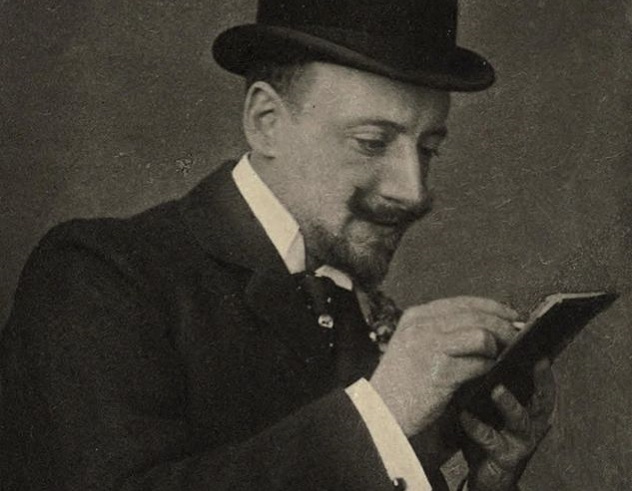
Finally, we come to fascist crackpot Gabriele D’Annunzio. He was named after an angel but turned out to be a grotesque and sinister individual, having claimed, among other things, to have eaten the flesh of children. As a writer and poet, he was admired by Proust and Joyce. His 48 volumes of work explore the sensuous, brutal, erotic, and just plain bizarre. Needless to say, his works were banned by the Vatican.
He found academic work easy—he could write to his parents in six languages by the age of 16, but he also developed a contemptuous eye for the rest of the human race. Influenced by Nietzsche, he viewed himself as a superman above the common herd.
D’Annunzio entered politics in 1897, fled to France over debts in 1910, and became a fighter pilot during World War I. In this period, he became prominent for his nationalist and proto-fascist views. He believed it was necessary for Italy to win international respect by sacrificing the lives of its young in battle. His overblown rhetoric, racial views, balcony addresses, and use of black-shirted supporters to attack opponents were a big influence on Mussolini, who later sent D’Annunzio gifts including a plane and part of a battleship for his garden.
His maddest venture came in 1919, when he and his supporters established their own city-state at Fiume after the Paris Peace Conference had given it to Croatia. D’Annunzio ran the city with a bizarre mixture of fascism and aestheticism. He instigated racially exclusive policies and a leadership cult while simultaneously including music as a fundamental part of the constitution and having the flowers around his bed changed thrice daily.
He was notably priapic, but he treated his conquests with disdain. He went through wives, actresses, and courtesans, and he expected sex with his housekeeper three times a day. It was rumored that he had ribs removed so that he could fellate himself. His final lover turned out to be a Nazi agent, who possibly killed him with poison.
Matthew writes and edits copy for a living, when not staring out the window or sleeping.
